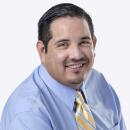St. John Paul II STEM Academy foundation being set
- Share via
Curriculum, cost and modernization projects have started to take shape at St. John Paul II STEM Academy, the Roman Catholic high school set to open this summer on the campus of longtime institution Bellarmine-Jefferson High School.
St. John Paul II held its first information night Wednesday evening for prospective families, and administrators laid out plans for the 2019-20 school year and beyond.
The new school is replacing Bell-Jeff, which shuttered its doors last year due to low attendance after operating for 74 years.
Annual tuition at the science, technology, engineering and math, or STEM, academy is $14,950, which is comparable to nearby Catholic schools, including Holy Family ($9,560), St. Monica Academy ($10,450), St. Francis ($16,900), Providence ($17,550) and Flintridge Sacred Heart Academy ($25,800).
Jeff Hilger, president and founding director of St. John Paul II, said approximately 25% of students will receive some financial aid, with need-based assistance and merit-based scholarships available.
The first freshman class is expected to be between 45 and 80 students, with the student body set to cap at around 400 students, once all four high-school grade levels are housed there.
The school is co-institutional rather than co-educational, meaning that while St. John Paul II is open to boys and girls, some classes — such as labs and STEM classes — will be split up by gender.
“We have some great research into the effectiveness of that program,” Hilger said of co-institutional learning versus co-educational, “and we’re excited to roll that out.”
The school will offer either digital media arts or engineering pathways, along with standard high school coursework and optional honors courses.
Students who opt for digital media arts will take classes such as 3-D modeling, game theory and animation, while engineering students will learn Python coding, Computer Aided Drafting, or CAD, and applied robotics.
Both pathways will include field trips, job shadowing and work with academic partners, such as the University of Texas at Austin’s Cockrell School of Engineering and Woodbury University’s Applied Computer Science division.
“One of the key things that we want to do is integrate this idea of design thinking,” said Bridget Higgins, dean of academic excellence. “We want to bring the actual industries into the classroom to be teaching students how to think in the way they would need to think in the real world.”
The proposed schedule will begin with a morning assembly at 7:40 a.m. and end with a 3:30 p.m. dismissal.
St. John Paul II will utilize a 4x8 block scheduling method in which students will take four classes each semester over the four years attending the school.
Each class will last 1 hour and 10 minutes, and there will be two interactive one-hour labs, one in the morning and the other in the afternoon.
Hilger said the labs will go beyond the traditional science environment.
“Our labs are problem-solving labs,” he said. “Any two different classes — math, religion, history, science, Spanish, music — any two classes are going to come together, and the teachers are going to create a monthlong project with the students together.”
One example of these fusion labs given by Hilger was a joint English and engineering project in which students will utilize kits to create sound-recording devices.
As for the campus, Hilger said $300,000 has been earmarked for renovations, set to begin in March.
Michael Parks, dean of student services, said the first project will be to paint and refurbish the main hallway and doors, give the administrative offices a “face-lift” and turn some classrooms into labs.
Overall, the school’s four-year remodel will include new tables, desks, two new science labs, fine-arts classrooms, a new chapel and revamped athletic facilities.
“The way we phased in the plan is all this work is going to happen in the off-time when the students are not here,” said Parks, as the school is set to open in mid-August. “We’re working with the first phase from March until early August.”
Hilger said the school will also offer CIF Southern Section sports basketball, volleyball, cross-country and track and field the first year, with plans to add soccer, baseball and softball the following two years.
“This is an exciting time for the community, first families and everyone involved,” Hilger said.
